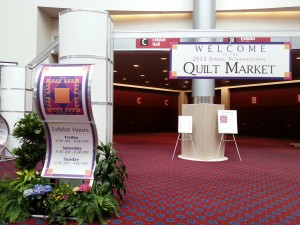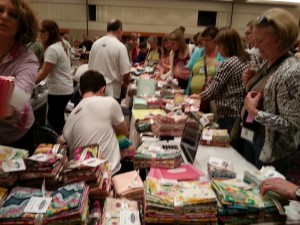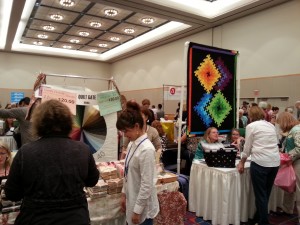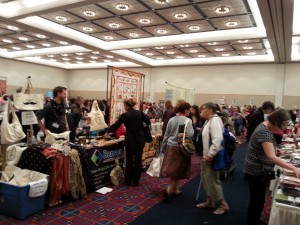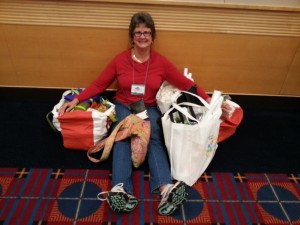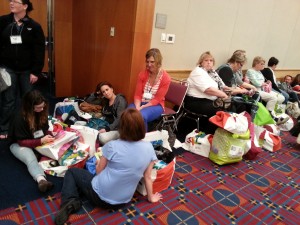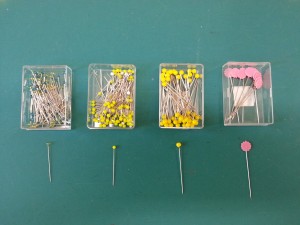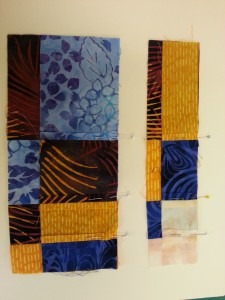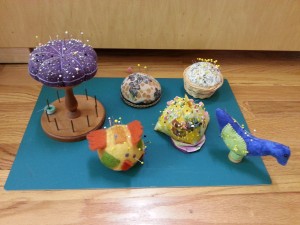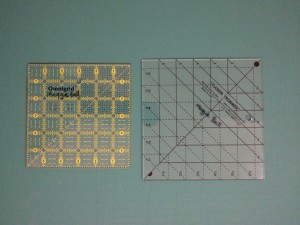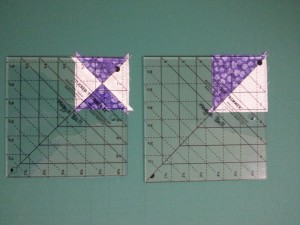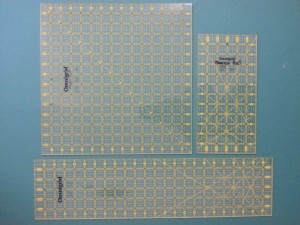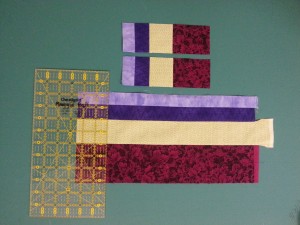I’ve just returned from three days in Portland where I attended International Quilt Market. It’s four years since I’ve been to this trade show which is held every spring and fall, so I was excited to re-establish contacts in the quilting business and check out all the wonderful new products. As a preview to the exhibition halls opening there was an evening Sample Spree. 120 of the trade show vendors had tables and were selling their wares at wholesale prices. This is an extremely popular event and always oversubscribed. The queue to get in was insane and people began lining up two hours before the doors opened! It is an opportunity for Market attendees, (quilt shop owners and employees, long-arm quilters, teachers etc), to buy fabric (mostly bundles of fat-quarters), tools, books etc., very cheaply for their personal use.
It’s very crowded and you are only allowed to take in bags (no wheely suitcases). People race around loading up their bags and the vendors are usually swamped for the first half hour. I waited until the doors had been open for about 20 minutes before joining the stampede. After a while, some exhausted attendees parked themselves on the floor and rested while guarding their loot!
I chatted with this lady, Pam Johnson, from California, who assured “It’s not all mine, some of it is my friend’s!” Okay, I’ll admit it, I succumbed too and bought two large bundles of fat-quarters from Henry Glass & Co. $25 for 17 fat-quarters was too good a bargain to resist!
